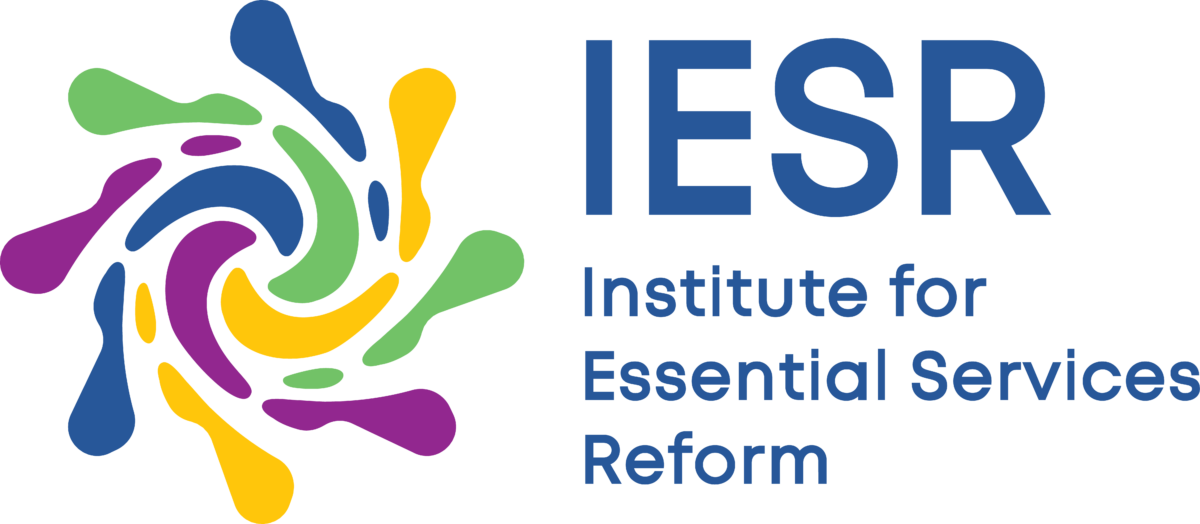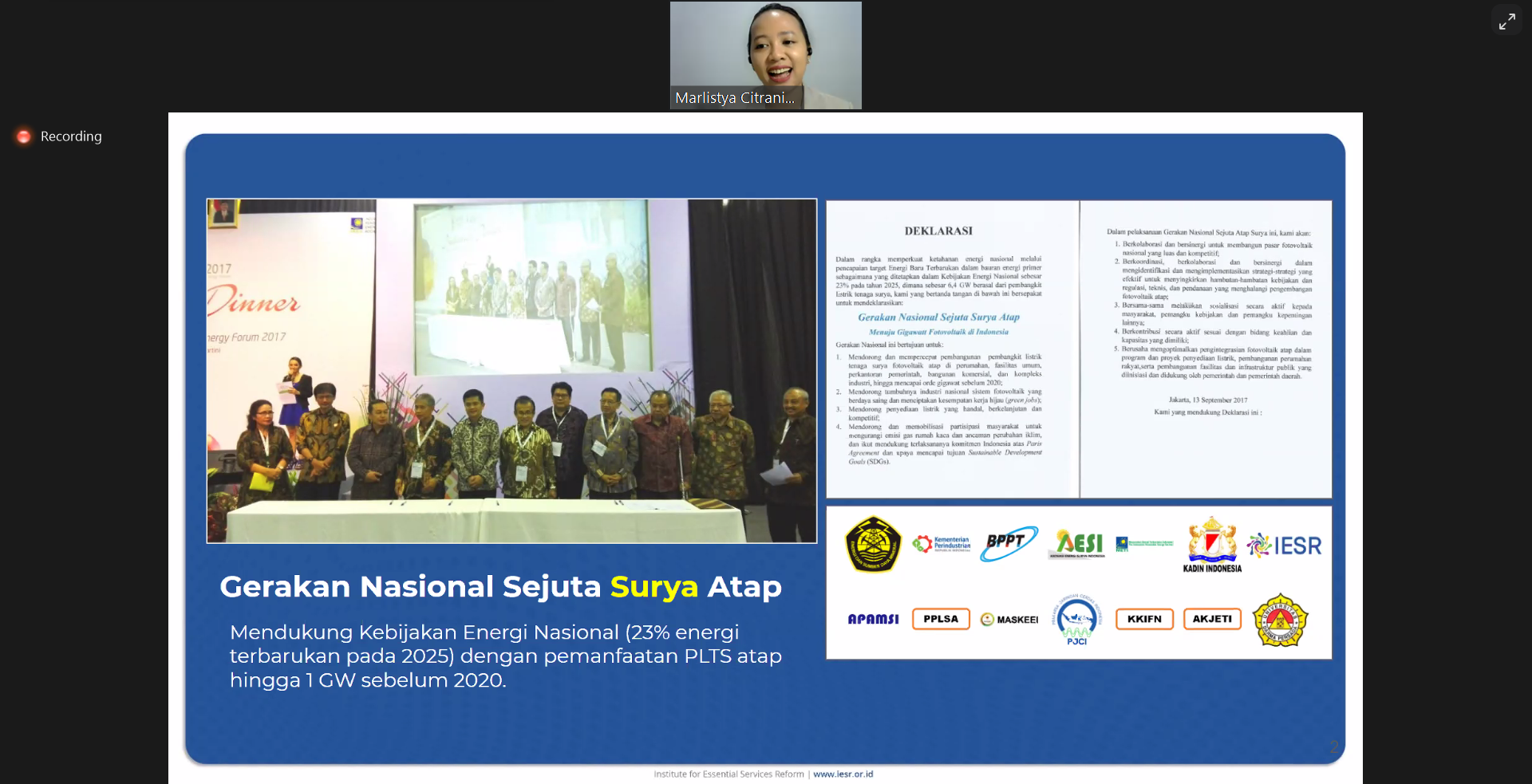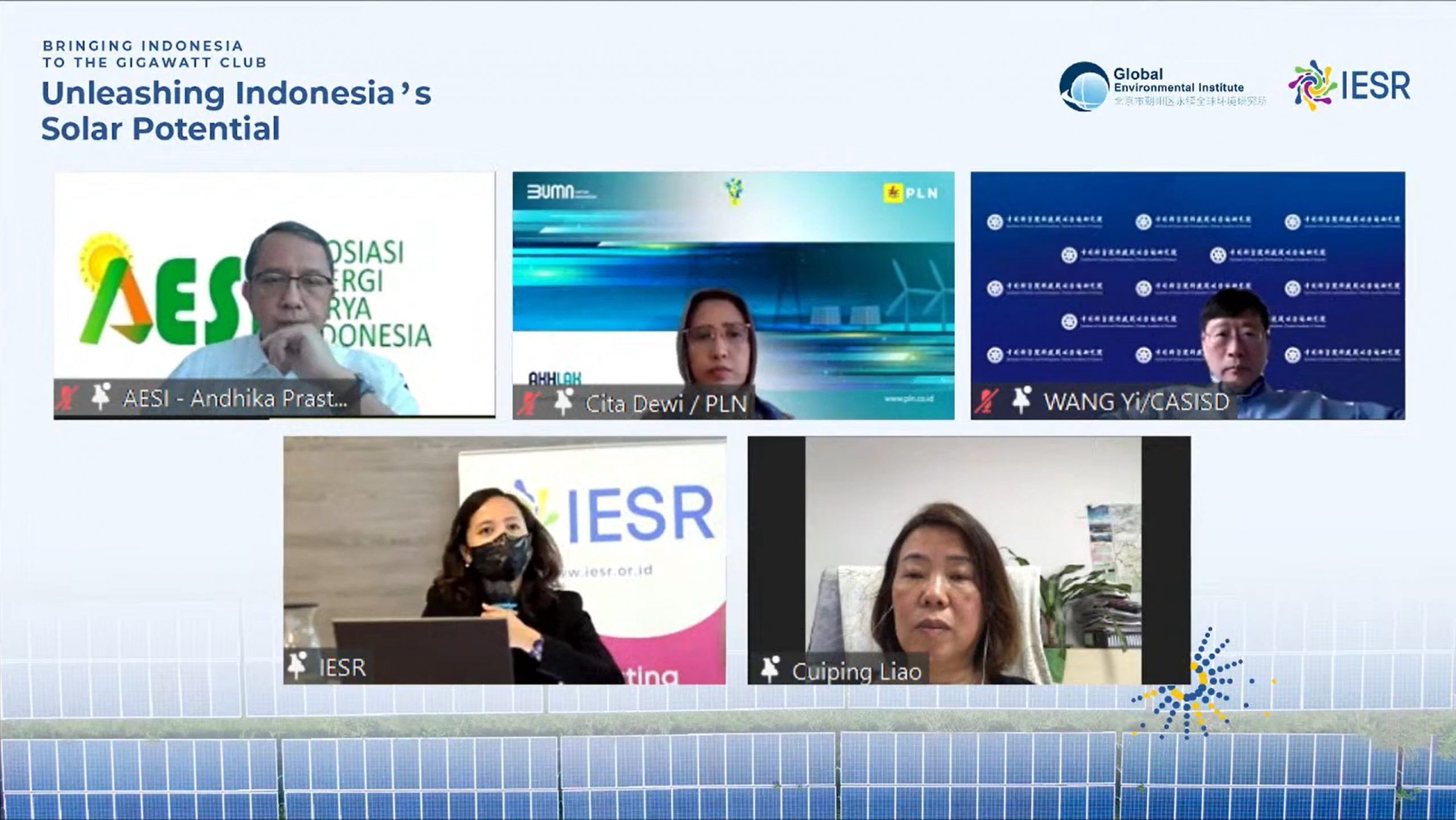Jakarta, 24 June 2021, IESR survey shows that more people are interested in adopting rooftop solar power plants, especially if an attractive financing scheme is available. It will be a huge opportunity to expand the rooftop solar PV market answering the challenges of the climate crisis on a practical level done individually by transitioning to renewable energy.
The urge to develop renewable energy to protect the earth from rising temperatures above 1.5 degrees C, especially by utilizing solar PV has been started in 2017, through the National Movement of One Million of Solar Rooftops (Solar Archipelago). IESR together with 13 other institutions initiated this movement. The target of this movement is to achieve 1 GW of rooftop solar PV in Indonesia by 2020, assuming one house installs 1 KWp of rooftop PV. Compared to the potential of solar power in Indonesia, whose official number is 207 GW, but the actual technical potential is way bigger up to 20.000 GW according to IESR, the 1 GW target is a small target.
“This target was made as a benchmark, considering that at that time there was no ministerial regulation, nor a market that looked potential. When we reach 1 GW, it means that there is a combination of supportive regulations, reliable EPC companies, and a mature market. So this target is not only to install 1 GW of solar PV rooftop but also to fight for the supporting ecosystem,” explained Marlistya Citraningrum, IESR’s Sustainable Energy Access Program Manager, in an online workshop entitled “Cooperatives as Agents of Change in Financing Climate Change Mitigation and Adaptation”.
The initiation of Solar Archipelago projects missed their target in achieving 1 GW of rooftop solar in Indonesia’s residential area, however, there has been a rapid increase in terms of the number of rooftop solar PV users.
“When this initiative was launched, there were around 200s new rooftop solar PV customers. Currently, there are around 3000s households of PV mini-grid. It has not reached the target of one million roofs, but there is a significant increase,” said Marlistya
The increase in PV mini-grid customers indicates that the interest and information received by the public about this technology is increasingly widespread. Since 2018 IESR has conducted market studies in the following cities, Greater Jakarta, Surabaya, seven cities in Central Java, and three cities in Bali. The survey shows that there are various potential PV mini-grid markets in each of these cities.
In Jabodetabek 13% of respondents fall into the category of early followers and early adopters. This group is respondents who have knowledge of rooftop PV and are financially able to afford it. This group only needs comprehensive information covering PV mini-grid technology, installation procedures, as well as service providers for rooftop PV installations. This group of early followers and early adopters is quite large in various cities, 19% in Surabaya, 9.6% in Central Java, and 23.3% in Bali.
Another interesting thing about IESR’s market survey is that the issue of price is still the second most frequently asked question by potential consumers. Questions about savings are the most frequently asked questions by potential customers. This phenomenon shows that price is still the main consideration for prospective solar PV customers.
The attractive rooftop solar PV mini-grid scheme is an opportunity for financial institutions, including cooperatives.
“At least, there are 3 opportunities that can be taken by cooperatives to participate in this rooftop solar PV scheme. First, by collaborating with EPC companies and providing financing schemes. Of course, you need to choose a trusted EPC company. The second is by selling solar panels as well as providing a financing scheme. Third, providing a financing scheme as well as after-sales service,” explained Marlistya.
Attractive and affordable financing schemes for PV mini-grid are still difficult to find at this time because currently EPC companies just work with banks. Of course, this should be seen as an opportunity for cooperatives to develop their programs.
Closing the first session of the morning workshop, Fitrian Ardiansyah, chairperson of the Sustainable Trade Initiative Foundation, stated that the financing of rooftop solar power plants would be one of the business niches for cooperatives.
“The green economy is aggregated at the local community level, cooperatives are the right financial institutions to pick up the ball at this opportunity,” he said.






